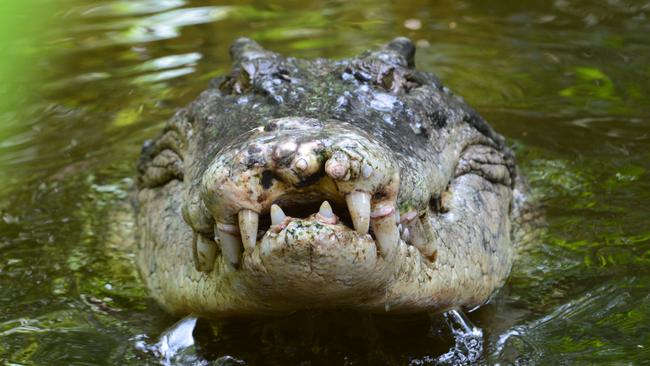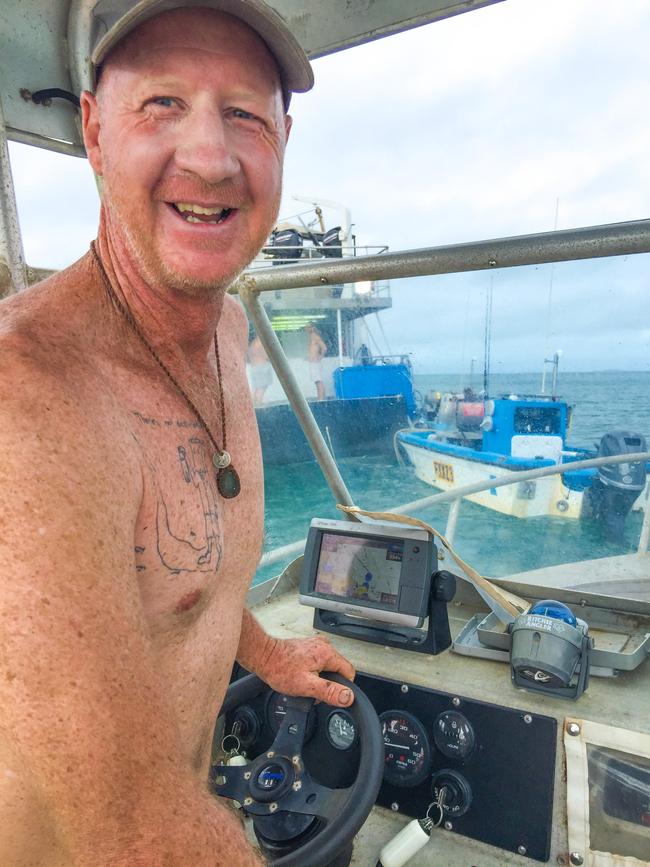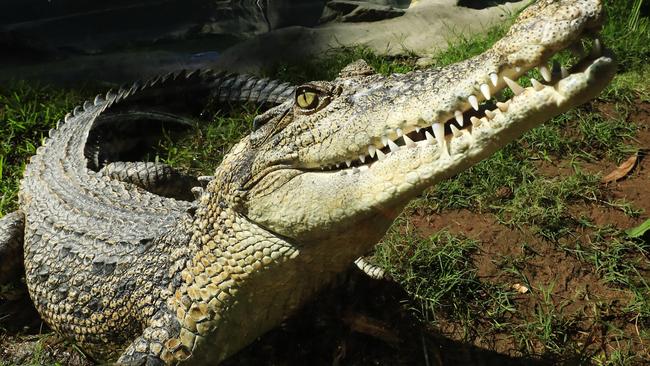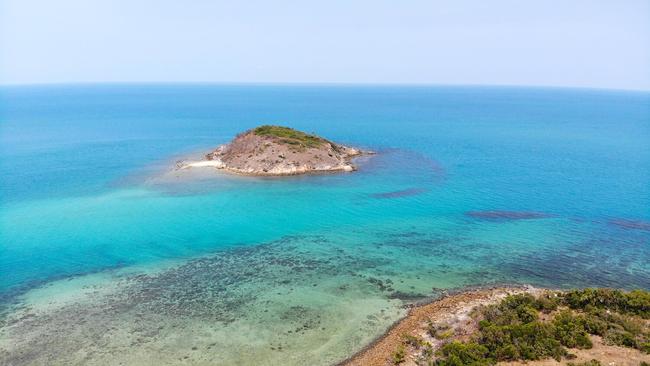The jaws of death: crocodile numbers rise along with attacks on people
If you are wondering what two Australian soldiers were doing swimming off a lonely reach of Cape York Peninsula eight days ago, so are the locals. Their story is cautionary for two reasons.

If you are wondering what two Australian soldiers were doing swimming off a lonely reach of Cape York Peninsula eight days ago, so are the locals. Both young men ended up in the jaws of a saltwater crocodile and were supremely fortunate to escape.
Their story is cautionary for two reasons. First, they were mauled in a choppy sea, not some murky river estuary or waterhole where the danger is more clearly recognised. The near-tragedy happened more than 500m offshore off Portland Roads in broad daylight, the fourth croc attack this year.
Second, the soldiers were in the water for only minutes before the 2.5m reptile struck. This goes to the jagged teeth of the debate raging across northern Australia on how to manage an exploding wild crocodile population, half a century after the creatures were hunted to the brink of extinction.
The numbers are now such that people have a far greater chance of crossing paths with the nation’s apex predator than ever before, in situations that might not immediately present as risky. Make a mistake in the croc zone and it could be your last.
Last Friday, August 6, is a case in point. For once, the sun was not shining on Portland Roads, population six, one of the few safe anchorages between the tip of the peninsula and Cooktown, 800km north of Cairns. A howling sou’wester had whipped up a punishing swell, hard going for the crew of the flat-bottomed army landing craft en route to Cairns for a maintenance call.
The first domino fell when the vessel pulled in soon after 2pm to overnight in the secluded bay, bookended by a white beach to the north and mangroves that spill into a normally crystalline sea. It had been a long, testing voyage from home base in Darwin and the grey sky mirrored the stormy ocean.
The two men, in their 20s and 30s respectively, climbed in a launch and motored to a nearby reef, where the fishing looked promising. Those who later came to their aid believe they entered the water – domino No.2 – to dive for rock lobster about 4pm.
What the soldiers didn’t know, of course, is that they had unwanted company. Perhaps it was bad luck, and the juvenile saltie – aged 15 or so, tipping the scales at more than 90kg – had the same idea about catching a fish dinner and chanced across them. More likely, it had trailed the launch to where they made the ill-fated decision to jump in.
“Basically, they landed on top of the croc,” says Katie Goodwin, co-operator of the Temple guesthouse overlooking the inlet. The brute latched on to the younger soldier’s left arm, dragging him underwater in a “death roll”, the frenzied manoeuvre crocodiles use to drown prey. His neck was deeply clawed in the struggle.
His companion didn’t hesitate. In an astonishing act of bravery, he threw himself at the crocodile in an attempt to pry open its jaws. It let go and bit down on the man’s right hand, splintering bones. Then it was his turn to be “flipped”, according to Goodwin’s partner, Jayson Watkin, who helped transfer the injured pair to shore to be choppered to hospital.
Somehow, the older soldier had the presence of mind to reach for a knife clipped to his belt. With one hand still gripped by the writhing crocodile, he stabbed at the scaly head until it released him too. Watkin could hardly believe the tale he heard from the survivors.
“Look, you can say what you want about these guys being naive, even stupid to get in that water,” he tells Inquirer.
“But you can’t forget what they did during the attack. To have the intestinal fortitude to launch yourself into such a violent situation is really quite incredible. It took amazing courage and tenacity.”

It also dramatically underlines the challenge confronted by authorities trying to control an estimated 100,000 toothy specimens in the Northern Territory and 30,000 in Queensland, according to the first detailed survey of crocodile numbers in the Sunshine State, released last month. The rate of attacks on people is also surging. Matt Brien, program co-ordinator of the Queensland government’s northern wildlife operations, says the yardstick used to be one non-fatal incident per year and a death every three years. Now it’s more like 1.5 attacks annually, a reflection of wild croc numbers as well as human encroachment on their domain. (Interestingly, the fatality rate has not shifted since the 1970s, Brien, says.)
“People are not wrong in believing that there are more crocodiles in more places,” he explains. “There’s no sugar-coating it … they are a serious predator and certainly are capable of attacking humans on occasion.”
This year looms as a notably severe one for the state, with the soldiers’ ordeal following non-lethal attacks on a 56-year-old man swimming at Lake Placid, north of Cairns, on January 28, and the near-miss for Isaac Adidi, 22, who was seized near Weipa atop Cape York on January 31 and lived by eye-gouging the 3.6m croc. On February 11, yachtsman Andrew Heard, 69, disappeared while fishing in a dinghy off Hinchinbrook Island, 120km north of Townsville; his remains were later found in two crocodiles.
Note the denominator? Brien says 80 per cent of victims are men, partly because the pursuit that most often puts people in proximity to crocodiles is recreational fishing, a popular male pastime in the north. This also helps explain why relatively few tourists are attacked.
The debate is particularly animated in Queensland because ballooning regional centres – think Cairns, Townsville and Mackay with a combined population of more than 500,000 – are eating into croc habitat, the brick-and-tile subdivisions displacing coastal lowlands that were formerly swamp or given over to sugarcane.
Politicians such as federal independent Bob Katter and his son, Robbie, a state MP who heads the eponymous Katter’s Australian Party, have been vocal in demanding a cull.
“Saltwater crocodiles and human communities do not mix,” says Robbie Katter. “I find it mind-boggling that not wanting your pets, friends and family members eaten by crocs is considered radical these days.”
Despite the Katters’ claim that the state Labor government is in the pocket of greens and those ubiquitous Brisbane “elites”, Brien says the trapping and relocation of problem creatures does the job.
About 50 a year are sent to crocodile farms. These invariably large crocs cannot be killed in captivity; they live out their days as breeding stock or visitor attractions.
With a wild population three times larger than Queensland’s, the NT is more aggressive in issuing permits for troublesome crocs to be put down; more than 600 are shot in situ annually, a last resort in Queensland, and 250 removed alive. Commercial harvesting of wild crocodile eggs is allowed in both jurisdictions.

There is no reprieve, though, for man-eaters. Brien says most wild crocodiles are “inherently wary” of people; they instinctively keep a distance. But hunting human prey fundamentally changes a crocodile’s behaviour, making it an ongoing threat.
Typically a territorial creature, it will stay close to the attack scene – even when this is not its usual range. The croc that went after the soldiers off Portland Roads was shot by rangers less than 100m from where it pounced.
“There is just no way we can take a risk with an animal like that,” Brien says.
“A large predator like a saltwater crocodile has to be managed sustainably but with public safety prioritised. Otherwise people are not going to tolerate living with them.”
There was another giveaway in last Friday’s drama: the age of the croc. Just like human teenagers, juvenile salties can be quite a handful.
By 15, a croc can measure 3m from tail to snout. They are transitioning from eating small fish and crustaceans to larger quarry – waterbirds, an unwary kangaroo or calf dragged from the river’s edge. Males might also be fighting other crocs for territory or mates, amping up the aggression.
“Like all teenagers, they are pushing boundaries,” Brien says. Which is why so many attacks feature male crocs sized 2.5-3m. To a hungry croc’s eyes, the low profile of a swimming human can look a lot like a flapping bird – a tempting meal. While few females progress beyond 3m in size, a male can hit 6m given time and luck. For each metre grown beyond 3m, weight doubles.
Brien says Queensland’s 30,000-strong crocodile population shows signs of having plateaued and should be kept in check by management measures. The count conducted from 2016-19 threw up some surprising results.
While Cape York Peninsula was, predictably, home to the largest concentrations of crocs, the highest density of them – 5.5/km – was in Proserpine River, on the doorstep of the Whitsunday holiday coast. No established populations were identified south of Rockhampton’s Fitzroy River.
Overall, a crocodile density of 1.7/km in the surveyed catchments was a third of that for the NT, in line with the population difference. Biomass, an indicator of size as well as numbers, was 36kg/km in Queensland against a mammoth 388kg/km in the Territory.
As we report in the news section, scientists suspect the migration of large crocodiles from the Top End is driving an increase in fatal attacks on people in Timor-Leste, even though it lies at the far end of 450km of open ocean.

Limited DNA testing of crocodiles native to the island nation has undercut the theory, advanced by veteran Darwin-based crocodile researcher Grahame Webb, revealing there is no genetic crossover with the Australian reptiles. But Webb is adamant more work needs to be done.
Brien keeps careful tabs on the project given that he sees DNA sampling as an important tool to understand where and how crocodiles move, part of the jigsaw of managing them in the wild. Travelling long distances is certainly not an issue; some have been tracked by satellite making 900km journeys.
Brien is intrigued by another finding involving Webb that the Coburg Peninsula east of Darwin forms an apparent natural barrier to crocodile movement.
The populations on either side of the outcrop are genetically distinct. It could be that ocean currents or tidal shifts are in play, but no one knows for sure, and Queensland is conducting its own DNA survey to widen the net.
“We had basically assumed that crocodiles could go wherever they want,” he says. “But that appears to be not the actual case. There are natural barriers to movement … and it would be useful to understand why.”
As for the injured soldiers, both are recovering in hospital, though it was touch-and-go for the younger man before they were airlifted to hospital in Cairns.
Now that Portland Roads has settled back into its accustomed quiet, Jayson Watkin is hoping something good can come of the attack, that maybe someone, somewhere down south, will recognise the crying need for infrastructure in this secluded neck of Cape York. A jetty might be a start. Because who in their right mind would want to dip so much as a toe in that warm, inviting water where danger always lurks.

